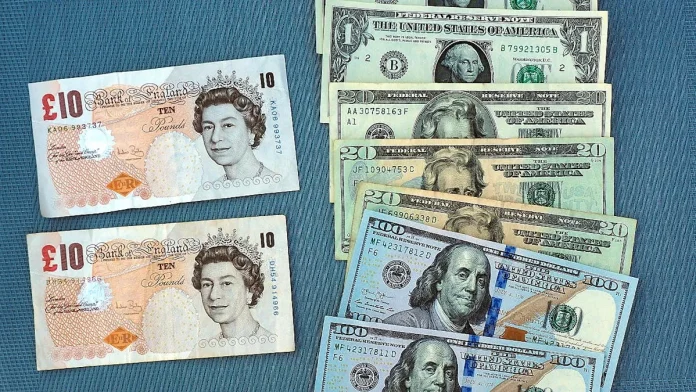The pound sterling (GBP) gradually regained ground against the US dollar (USD), lifting GBP/USD from three-month lows to ten-day highs around 1.3500.
The pound sterling experienced a sharp reversal
The GBP/USD pair received a double boost last week, which helped it make a decent recovery, recording its best weekly performance since the end of June.
Disappointing US labour market data for July and a slowdown in the services sector heightened concerns about the US economic outlook, doubling expectations that the Fed will cut interest rates in September.
Traders are pricing in a 93% probability of a rate cut in September, with at least two rate cuts expected by the end of the year, according to the CME Group’s Fed Watch tool.
This dovish narrative continued to weigh on the US dollar, while the latest tariffs announced by US President Donald Trump on his main trading partners heightened economic concerns and the greenback’s weakness.
A report in the Financial Times on Monday, citing a letter from Customs and Border Protection, said the US had imposed tariffs on imports of one-kilogram gold bars.
Earlier on Thursday, Trump’s increased tariffs on imports from dozens of countries came into effect, with high tariffs on Switzerland, Brazil and India. The US president also threatened additional tariffs on China and Japan over their oil imports from Russia after imposing an additional 25% tariff on India.
Increased tensions surrounding appointments to the Fed and, consequently, its independence exacerbated the US dollar’s woes, contributing to the pair’s recovery.
Trump nominated Steven Miran, chairman of the Council of Economic Advisers, to replace Fed Governing Council member Adriana Kugler. Miran is also seen as a possible successor to Jerome Powell when his term expires in May 2026, according to some industry experts.
From the pound’s perspective, buyers took advantage of the Bank of England’s (BoE) 5-4 vote in favour of a rate cut on Thursday, instead of the expected 7-2.
The BoE delivered the expected 25 basis point rate cut from 4.25% to 4% on “Super Thursday,” with the split vote indicating that policymakers remain concerned about still-high inflation, even despite the rate cut.
According to Goldman Sachs, the split in the BoE vote “implies one of the most hawkish 25 basis point cuts that could reasonably have been expected.” Expectations of a divergence in monetary policy outlook between the Fed and the BoE contributed to the recovery of GBP/USD.
Keep an eye on important economic data from the US and the UK
With the BoE event risk out of the way and Trump’s tariffs on almost all US trading partners now in effect, attention is shifting to high-impact economic data releases on both sides of the Atlantic.
Monday was a quiet day, setting the stage for a remarkable Tuesday, as volatility is likely to increase ahead of the UK employment report and the release of US consumer price index (CPI) data.
On Wednesday, speeches by a number of Fed members will fill an otherwise slight data calendar. Traders are eagerly awaiting preliminary data on the UK economy’s second-quarter gross domestic product (GDP), along with industrial production and trade figures.
Later in the day, the US calendar will feature producer price index (PPI) data and the usual weekly jobless claims.
Retail sales and industrial production data from China will attract some attention early on Friday ahead of the release of US retail sales figures. Preliminary data on consumer sentiment and inflation expectations from the University of Michigan will also be closely watched.
Even when attention returns to fundamentals, trade headlines will continue to play a key role in GBP/USD price action.
